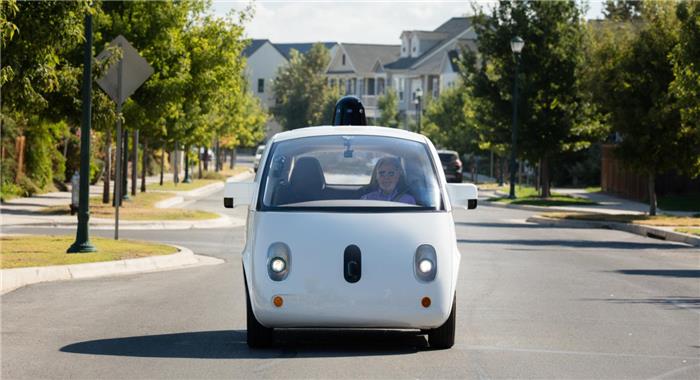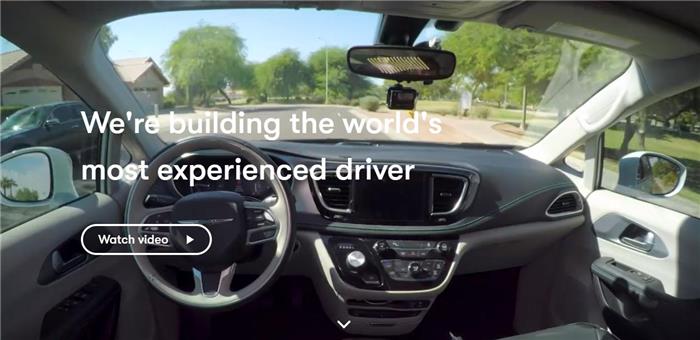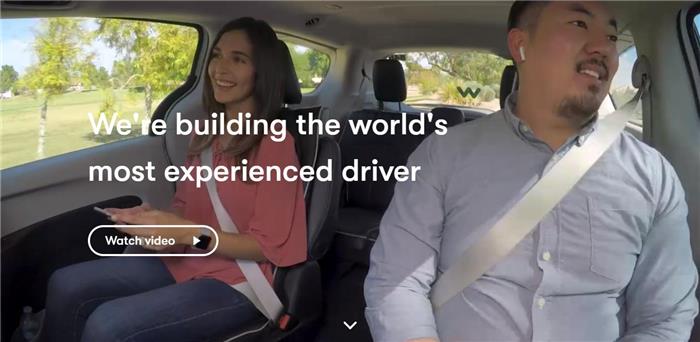
Geely Automobile News According to foreign media reports, the Consumer Watchdog (United States Consumer Protection Organization (Consumer Watchdog) claims that, from the California Automobile Administration issued by "2017 Auto Driving "offage report" (California Autonomous Vehicle "Disengagement Reports"), autopilot technology It is not safe. At least one standby driver is currently required to monitor the operation of the vehicle to ensure the safety of automatic driving tests.
The report mainly covers the following two aspects:
1.Automotive vehicle road test mileage;
2. "Disengagement" times;
To a certain extent, the fewer "disengagement" times, the more stable the system. For many companies dedicated to autopilot R&D and drive tests, the report is undoubtedly the 2017 auto driving road test report.
The report included a total of 20 companies, of which Waymo and GM's Cruise performed best, as detailed below.
Waymo with General Cruise Hutch hegemony

Tested vehicles, test mileage, "outgoing times" comparison
Waymo has deployed 75 test vehicles with a total of 352,544 miles of automated driving tests in California. According to reports, 63 "disengagements" have occurred, that is, every 5,506 miles required manual intervention.
In comparison, in the "2016 Autopilot Detachment Report", Waymo's automatic driving test mileage in California was 635,868 miles, "disengaged" 124 times, that is: every 5,127 miles required manual intervention.
General Cruise deployed 86 test vehicles, with 131,675 miles of automatic driving test mileage, and “disengagement†of 105 times, ie, every 1,254 miles required manual intervention.
Comparison of collisions
As a measure of the safety of automatic driving technology, the number of collisions is also an important data for DMV's value.
According to General Cruise, there were 22 collisions in the 2017 fleet. In addition, 25 accidents occurred after the road test of the company.
According to Waymo, there were a total of three collisions in its fleet in 2017. In addition, 9 and 13 collisions occurred in 2015 and 2016 respectively. In addition, a total of 25 collisions have been reported since 2014.
The following is a summary of "out of report" for other 18 companies
Six companies that did not carry out drive tests: BMW, Ford, Honda, NIO USA, Volkswagen USA and Wheelo.
Companies that do not carry out drive tests in California: Tesla.
A company that has not yet submitted a report to the California Vehicle Administration: Faraday's future.
The following is a summary of the data for the 10 companies that carry out drive tests (sorted by the number of configured test vehicles):

Delphi (now split into Delphi Technology and Ambo Fort): equipped with a test vehicle, tested 1,810.55 miles, "disengaged" 81 times.
Telenav: Configured a test vehicle with a test mileage of 1,697 miles and "disengagement" 58 times.
Valeo North America: equipped with a test vehicle, tested 574 miles, "disengaged" 215 times.
Nvidia: equipped with two test vehicles, testing mileage of 505 miles, "disengagement" 105 times.
Mercedes-Benz: equipped with three test vehicles, tested 1,087 miles, "detached" 842 times.
Bosch: Three test vehicles were deployed, with a test mileage of 1,454 mpg and “detached†598 times.
Baidu USA: Four test vehicles were deployed with 1,971 miles of test mileage and “disengage†48 times.
Nissan: Five test vehicles were deployed, with a test mileage of 5,007 miles and 24 "disengagements".
Drive.ai: Seven test vehicles were deployed, with a test mileage of 6,572 miles and 151 “disengagement†times.
Zoox: equipped with 11 test vehicles, testing mileage of 2,191 miles, and 14 times of “disengagementâ€.

Summary (personal opinion)
From the report data, Waymo and General Cruise's dual-continental hegemony model will continue. Many well-known car companies have not yet started the road test, and their performance cannot be judged yet. Tesla is not on the road test in California and cannot be included in the comparison.
The remaining 10 companies deployed relatively few test vehicles. Only Zoox's test vehicles reached more than 10 vehicles, but there was a big gap compared with Waymo and General Cruise.
In terms of mileage tested: Nissan and Drive.ai are relatively high, with the former having far fewer “splits†than the latter. As a traditional car company, Nissan has a deeper understanding of technology.
Delphi, Telenav, Baidu USA, and Zoox have relatively close test mileage (around 2,000 miles), with Zoox having the lowest number of “disengagementsâ€.
Mercedes-Benz and Bosch were relatively weak in the performance of “disengagementâ€, which were 842 and 598 respectively.
Analysis of the Causes of "Disturbation" and Future Expectations
"2017 autopilot "off report" did not mention specific weather, temperature, humidity, road conditions and other specific test scenarios, but companies have some common problems in autopilot technology, some of which can be attributed to the vehicle The perception of the environment, part of the problem is related to the way the road is running, and the vehicle-mounted hardware and software of the test vehicle is also an important cause of “disengagementâ€. External environmental factors also have an impact on “disengagementâ€, such as excessive pedestrians and unclear traffic signs. In addition, the timeliness of data transmission (hysteresis), GPS positioning, lane change, uphill, and the perception and cooperation of various sensors are also important influencing factors.
From the above data obtained, Waymo and General Cruise will continue to compete for the top spot of autopilot. As for other companies, it is necessary to wait for the expansion of their test vehicles before they can determine the specific performance. The potential of Nissan and Drive.ai gradually emerged. The number of exits from Mercedes-Benz and Bosch is relatively high, and it may be possible to upgrade its autopilot technology through technical cooperation with other companies. As for many well-known car companies that do not carry out road tests, they only have to wait until this year or in the future. (Image courtesy of dmv.ca.gov and Waymo.com)
Auto Corrugatted Board Production Lines
Corrugated cardboard production line referred to as tile line, is the key production equipment of corrugated carton production enterprises, corrugated cardboard production line is the most important carton packaging enterprises in the production line equipment, including wet equipment, cadres equipment, an important part of production management system.
Complete Corrugator production line
Corrugated Cardboard Production Line is the professional design equipment to produce the 3ply,5ply,7ply cardboards.
♦Min to Max speed :150m/min – 350m/min
♦The paper width 1400-2200mm
♦Flute: A/C/B/E/F /G
Complete corrugator production line mainly consist of the Mill Stand, Pre-Heater, Multipe Paper Preheater, Single Facer, Glued Machine, The Over Bridge Converyes, Double Facer, Sitter Scoeres, CNC Cutters, Stackerss etc.
Mill Roll Stand,Single Facer,Double Facer,Cutter,Pre-heater,Staker,Corrugated Cardboard Machine,Automatic Corrugation Machine
HUATAO GROUP LTD , https://www.huataogroup.com